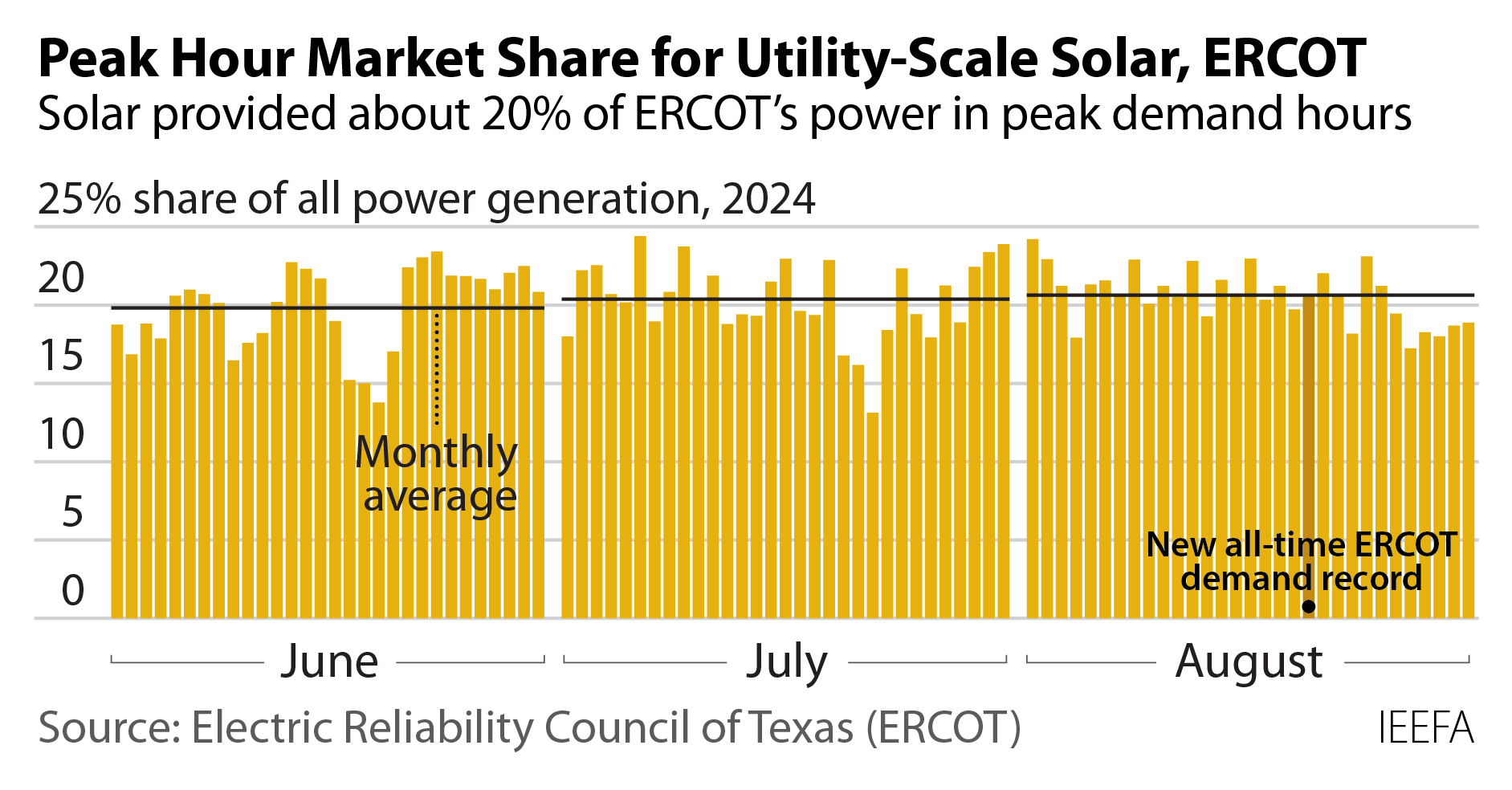A Transformative Summer for U.S. Electricity
Heat waves pummeled California and Texas throughout the summer and renewable energy generation stepped up to meet demand. A new briefing note from the Institute for Energy Economics and Financial Analysis (IEEFA) shows that the evidence from this summer’s sizzling heat is in and the verdict is clear: Renewables are reliably and economically transitioning the grid from fossil fuels.
Grid operators in California and Texas had little trouble meeting demand, in large part due to the rapid growth of renewable energy generation and the installation of thousands of megawatts of battery storage capacity. For two of the largest power markets in the country, and for the entire U.S., these are the hallmarks of a transformative shift.
“The energy transition is here and the speed at which it is happening can be hard to comprehend,” said Dennis Wamsted, IEEFA energy analyst and co-author of the report. “Four years ago, there was essentially zero battery storage capacity installed across the U.S., but now there are more than 20,000 megawatts and that figure increases monthly. That is impressive growth.”
Solar generated 16 million megawatt-hours of electricity from June 1 to August 31 in Texas, accounting for 11.6% of ERCOT’s total summer demand—a 40% increase from just a year ago. The transformation in California has been equally pronounced, and again points to the reliability-enhancing combination of solar and storage.

Despite critics’ assertions that renewables are unreliable, solar and storage’s performance in Texas and California when it was needed the most was robust and likely to keep growing. The experiences from the summer of 2024 demonstrate clearly that renewable energy and storage can reliably run power systems transitioning away from fossil fuels.
Energy Economics and Financial Analysis | https://ieefa.org/







